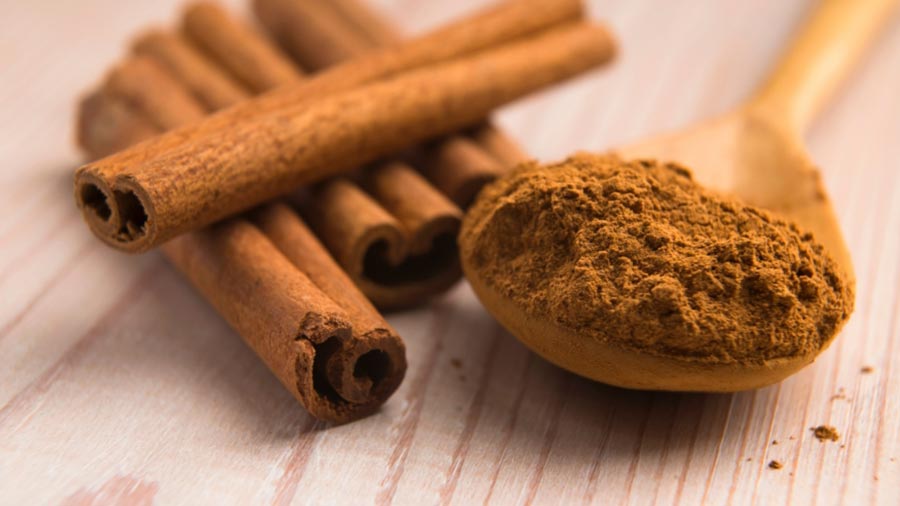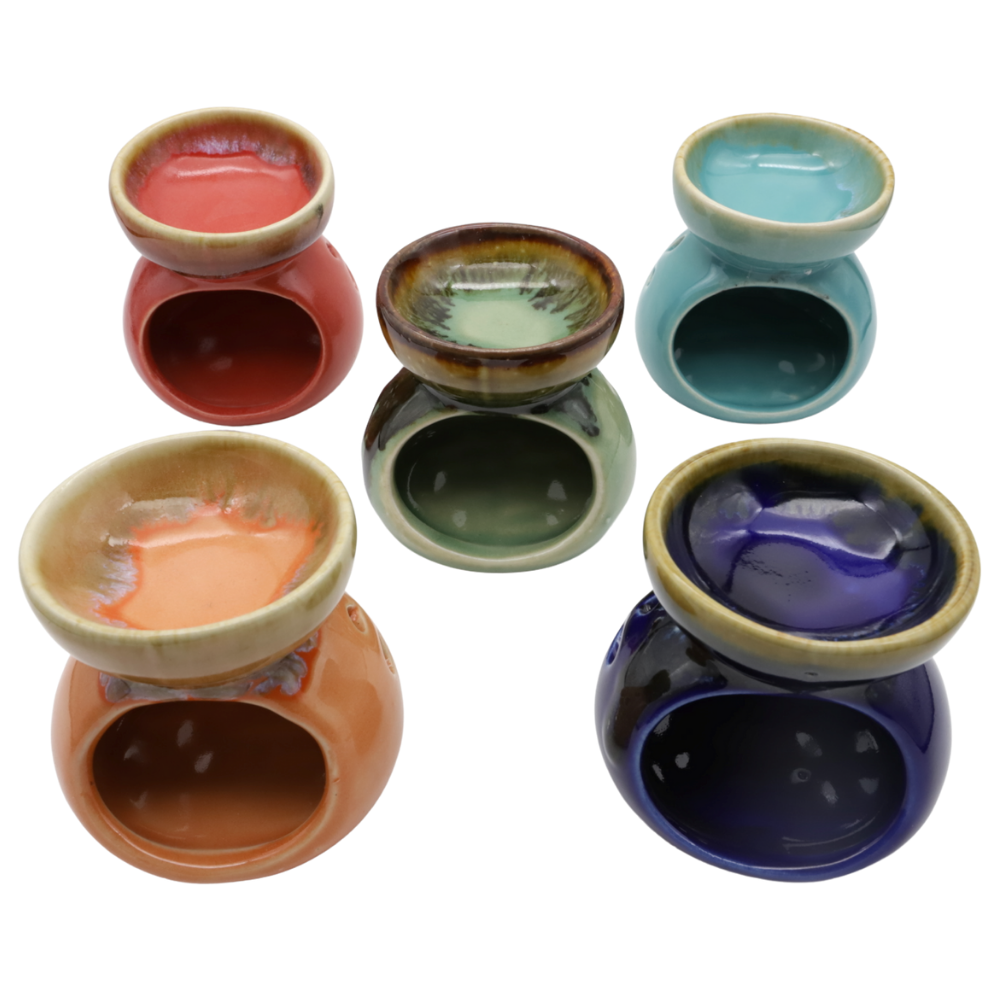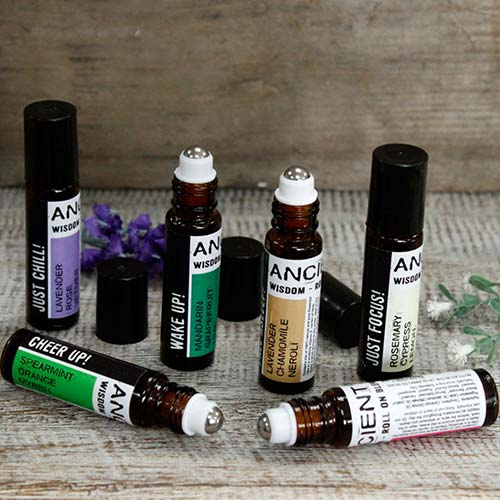Is cinnamon a spice or herb?
Cinnamon is a spice derived from the inner bark of several tree species from the genus Cinnamomum. The bark is peeled off and as it dries, it curls into the cinnamon sticks we know. Cinnamon can also be ground into a powder and used in various culinary and medicinal applications. Although cinnamon is sometimes referred to as an herb, it is technically a spice because it is derived from the bark of a tree rather than the leaves.
What does the cinnamon flower look like?

Each species of cinnamon will have a different type of flower bud but typically they will consist of a round bud that has a short stem attached to it with flower remnants curled around the immature flower, and it has a clove-like appearance.
Where did cinnamon originate?
Cinnamon is believed to have originated in Southeast Asia, specifically in regions of Sri Lanka, India, Bangladesh, and Myanmar. Cinnamon has been used in these regions for thousands of years, and it was highly prized by ancient civilizations like the Egyptians, who used it in various religious ceremonies and for medicinal purposes. The spice was also highly valued by traders who transported it along the famous "Spice Route" from Asia to Europe, where it became a luxury item.
How to grow cinnamon
Cinnamon is typically grown in tropical climates and can be difficult to cultivate in other regions. Here are some general steps for growing cinnamon:
1. Choose a suitable location: Cinnamon requires a warm, tropical climate with plenty of sunlight and well-drained soil.
2. Obtain cinnamon cuttings: Cinnamon can be propagated by taking cuttings from existing cinnamon plants. Cuttings should be taken from healthy, mature plants and should be at least six inches long.
3. Prepare the soil: The soil should be well-drained and fertile. Mix in compost or other organic matter to improve soil quality.
4. Plant the cuttings: Cuttings should be planted in holes that are twice the length of the cutting. Water the cuttings regularly and keep the soil moist but not waterlogged.
5. Provide appropriate care: Cinnamon plants require regular watering and fertilization. They also benefit from pruning to remove dead or damaged branches.
6. Harvest the cinnamon: Cinnamon can be harvested after the plant has matured, which can take several years. The bark is typically harvested and dried for use as a spice.
It's worth noting that cinnamon is a challenging crop to grow and requires a lot of care and attention. It may be best to purchase cinnamon from a reputable supplier rather than attempting to grow it yourself.
Different types of cinnamon?
There are several types of cinnamon, but the two most commonly used are Ceylon cinnamon and Cassia cinnamon. Cassia cinnamon is the more common variety and is what most people think of when they think of cinnamon. It has a strong, sweet flavor and is often used in baked goods and desserts. Cassia cinnamon is also less expensive and more readily available than Ceylon cinnamon. Ceylon cinnamon, on the other hand, is a milder, sweeter variety of cinnamon that is sometimes called "true cinnamon." It is more commonly used in savory dishes, such as in curries or rice dishes, and is also commonly used in tea. Other varieties of cinnamon include Saigon cinnamon and Korintje cinnamon, which are both types of Cassia cinnamon, and Indonesian cinnamon, which is a type of Ceylon cinnamon.
Cinnamon bark vs stick vs quill
Cinnamon bark, cinnamon stick, and cinnamon quill all refer to different forms of the same spice, but they have some differences. Cinnamon bark is the raw form of cinnamon, and it is usually sold in powdered form. Cinnamon sticks are made by rolling the cinnamon bark into tight rolls, which are then dried and sold as sticks. Cinnamon quills, on the other hand, are made by rolling multiple layers of thin cinnamon bark together into a single, long, and thin quill. Cinnamon quills are often used in dishes where a subtle cinnamon flavour is desired, as they can be easily removed from the dish after cooking. In contrast, cinnamon sticks are often used in drinks like mulled wine or hot apple cider, as they can be left in the drink for added flavour. The choice of which form of cinnamon to use will depend on the recipe and personal preference.
The medicinal benefits of cinnamon
Cinnamon has several potential medicinal benefits, it has antioxidant properties that can help protect the body against damage from free radicals. Additionally, it has anti-inflammatory effects that may help reduce inflammation throughout the body, which could be beneficial for conditions like arthritis. Cinnamon also has anti-bacterial and anti-fungal properties that could help defend against infection. It may also have anti-viral properties, which could be useful in fighting certain viral infections. Other potential medicinal benefits of cinnamon include regulating blood sugar, reducing the risk of insulin resistance, lowering cholesterol levels and managing blood pressure, supporting gut health, and providing some protection against Alzheimer’s and cancer. However, more research is needed to fully establish these effects, and anyone with a medical condition should consult their doctor before taking cinnamon as a supplement.
How to use cinnamon
Sprinkle it on food
Cinnamon can be used to add flavour and aroma to a variety of dishes, such as oatmeal, yogurt, smoothies, and fruit salads.
Use it in baking
Cinnamon is a popular ingredient in baked goods, such as cinnamon rolls, muffins, and cakes.
Make tea
Cinnamon tea is a simple and delicious way to enjoy the spice's health benefits. Simply add a cinnamon stick to boiling water and let it steep for several minutes.
Use it in savoury dishes
Cinnamon can also be used in savoury dishes, such as stews, curries, and rice dishes, to add a subtle sweetness and depth of flavour.
Make a home remedy
Cinnamon has been used for centuries as a natural remedy for a variety of ailments. It can be used to make a tea or tincture to help soothe digestive issues, lower blood sugar levels, and reduce inflammation.
Use it in aromatherapy
Cinnamon essential oil can be used in aromatherapy to create a warm, comforting atmosphere and promote relaxation.
What does cinnamon pair with?
Cinnamon is a versatile spice that pairs well with a variety of flavours, both sweet and savory. It is often used in sweet baked goods like cinnamon rolls, apple pie, and snickerdoodle cookies. It can also be used in savory dishes like curries, stews, and marinades for meat. Cinnamon pairs particularly well with apples, pears, bananas, chocolate, coffee, as well as nuts like almonds and pecans. It can be combined with other warm spices like nutmeg, cloves, and ginger for a delicious blend of flavours. Some other things that cinnamons pairs well with includes thyme, cloves, raisins, berries, sugar, cereal, cupcakes, orange, and oats.
The most popular cinnamon recipes
There is no specific recipe that is considered to be the most popular as it varies depending on personal tastes and preferences. However, cinnamon rolls are a classic and popular sweet treat that many people enjoy. There are also many savoury recipes that incorporate cinnamon, Some examples include cinnamon-Apple Pork Chops, and Bavarian Pot Roast. Ultimately, the most popular cinnamon recipe may vary depending on cultural and regional tastes. More examples of how cinnamon can be used in food and drinks is below.
- Beetroot and beef curry
- Cinnamon buns
- Vietnamese-spiced smoked duck breast
- Cinnamon twists
- Cinnamon pancakes
- Cinnamon latte
- Turmeric and cinnamon tea
- apple cider cocktail
- spiced apple kombucha
- lemon cinnamon water
- Apple and cinnamon juice
- Cinnamon vodka
- Cinnamon hot chocolate
- Cinnamon gin
- Dolce syrup
- Muffins
- Oat cookies
- Overnight oats
- Cinnamon swirl
- Gingerbread
- Cinnamon Ice cream
- Yule log
- Jelly bean
- Eggy bread
- French toast
- Flapjack
- Cinnamon yoghurt
Popular cinnamon products

The hand-tied cinnamon stick shaker sourced from North Thailand. This beautiful ornament doubles as a percussive musical instrument, with a lovely fragrant appeal. Each shaker contains approximately six cinnamon sticks from the Cinnamomum verum tree and is carefully hand-tied using sustainable jute. Hang it on your door or use it to create unique sounds.

Discover the soothing and therapeutic properties of Cinnamon essential oil. Extracted from the Cinnamomum zeylanicum tree, this oil is available in two varieties - one from the leaves and one from the bark. This blend is created from both the leaves and the sticks, making it a powerful antiseptic. Aromatherapy lovers claim that it can help with colds, bronchitis, diarrhoea, chills, infections, flu, rheumatism, and arthritis. It can be used in an oil burner, added to bath water, or blended into massage oil. However, it is essential to dilute the potent oil and seek expert supervision before use.

Yogi spiced herbal tea is a well-loved option for those seeking a warm and soothing drink filled with health benefits. The blend of four unique spices, including cinnamon, is known to enhance energy levels and trigger the production of happiness hormones. It's an excellent pick-me-up to help you stay energized throughout the day and motivated to tackle any challenge that comes your way. This special spice blend is ideal for health-conscious individuals who want a natural and invigorating way to feel their best.
Cinnamon soy wax melts are perfect for creating a relaxing atmosphere in your home. These organic soy wax melts are infused with pure star anise essential oil and topped with a sprinkle of cinnamon. Not only do they smell amazing, but they can also provide relief from nausea and digestive issues. Simply place one or two hearts in an oil burner and enjoy the beautiful aroma. These wax melts are ideal for any time of the year but are especially perfect for the festive season.
Cinnamon honey
Cinnamon honey is a delicious and healthy alternative to traditional honey. Made by infusing cinnamon with honey, this sweet and spicy concoction has a unique flavor that is perfect for adding to teas, baked goods, and more. Cinnamon honey has several health benefits, including its ability to boost the immune system and fight off bacterial infections. It also has anti-inflammatory properties, making it a great natural remedy for sore throats and coughs. Additionally, cinnamon honey has been shown to help regulate blood sugar levels, making it a great option for those with type 2 diabetes. Whether you use it as a sweetener or as a natural remedy, cinnamon honey is a delicious and healthy addition to any pantry.
Cinnamon nutritional information
Cinnamon is a good source of antioxidants, which can help to protect the body against damage from free radicals. It also contains anti-inflammatory compounds that can help to reduce inflammation in the body. Moreover, cinnamon has been shown to help regulate blood sugar levels by improving insulin sensitivity, making it a great option for those with type 2 diabetes. In terms of vitamins and minerals, cinnamon is a good source of manganese, fiber, and calcium. So, whether you sprinkle it on your oatmeal, add it to your coffee, or bake with it, cinnamon is a healthy and flavorful addition to any diet.
Cinnamon root
Cinnamon root, also known as Cinnamon cassia, is the root of an evergreen tree that is native to Southeast Asia. The root of the cinnamon tree is not as commonly used as its bark or leaves, which are more popular for their culinary and medicinal uses. However, cinnamon root has been used in traditional medicine for its anti-inflammatory, anti-bacterial, and anti-fungal properties. It is also rich in antioxidants and has been shown to have potential benefits for regulating blood sugar levels.
Cinnamon vs sweet cinnamon
Cinnamon and sweet cinnamon are two types of cinnamon that differ in taste, aroma, and appearance. Cinnamon, also known as Ceylon cinnamon or "true cinnamon," has a delicate and sweet flavor with a citrusy undertone. It has a lighter color and is more brittle and flaky than sweet cinnamon. On the other hand, sweet cinnamon, also known as cassia cinnamon, has a stronger and spicier flavor with a hint of bitterness. It is darker in color and has a thicker and harder bark than cinnamon.









